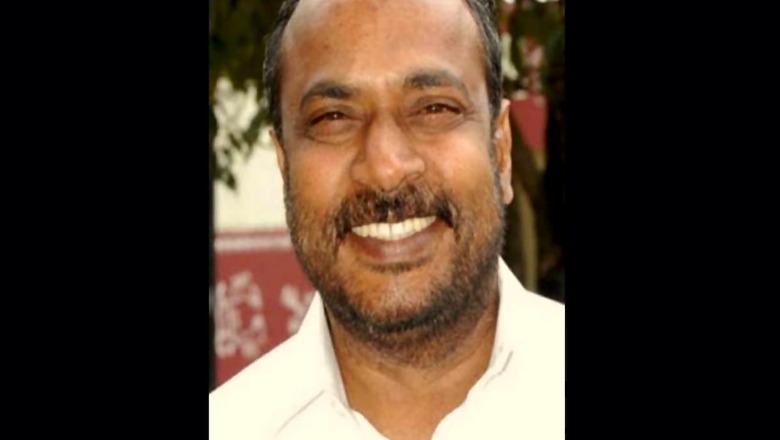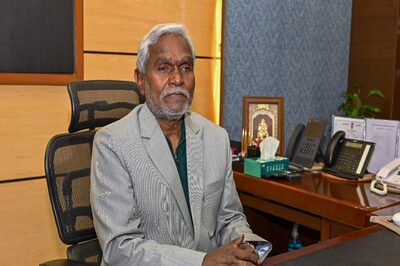
views
The heartbeat of representative democracy is the working of legislative institutions which represent the citizens. In recent times, the role and functioning of such legislative bodies has come under close scrutiny. The recent suicide by the deputy chairman of the legislative council in Karnataka, a few weeks after he was dragged out of the presiding officer’s chair, is still fresh in public memory. The unseemly events witnessed in the Karnataka legislative council raise a host of questions not just about legislative councils in particular but on the working of bodies that are expected to mirror public opinion and sentiments.
Karnataka is one of the six states of India which retain their legislative councils, the others being Uttar Pradesh, Bihar, Maharashtra, Andhra Pradesh and Telangana. It has gradually been abolished by many states as Article 169 of the Constitution allows Parliament to abolish or create a legislative council in a state on the basis of a resolution passed by the concerned state legislative assembly. Ever since the unprecedented events occurred on the floor of the House of the Karnataka legislative council there has been a debate on the value and utility of legislative councils.
One could argue that just as the Rajya Sabha (as its name indicates) is expected to represent the states at the national level, the legislative council is there to represent the local bodies, which since the 73/74 Amendment to the Constitution have become the legitimate third tier of the Indian federal system. In fact, a third of the members of a legislative council are elected by the local bodies in the state. What is in fact needed is that the proportion of members elected from the local bodies is increased and those elected by the legislative assembly is brought down.
Ever since SL Dharmegowda, deputy chairman of the Karnataka legislative council, took his own life and is believed to have left a note expressing his unhappiness with the treatment meted out to him on the floor of the House, the actions of the members of the Upper House of the state legislature have come into sharp focus. It must be stressed that there are multiple narratives that need to be taken into account when explaining the developments on that unfortunate day on the floor of the council. In terms of numbers, no single party has a majority in the council. The Congress and the Janata Dal (Secular) had earlier teamed up to support one another and had got a Congress MLC elected as the chairman and a JD(S) leader as the deputy chairman.
The ruling BJP had moved a no-confidence motion against the chairman and this had been rejected by the chairman himself on technical grounds. This provides the backdrop for the day’s events. As the meeting bell rang, it is alleged that the BJP members closed the doors that allow for the entry of the chairman to the council. It had already been decided by the ruling party in tandem with the JD(S) to request the deputy chairman to occupy the chair. This was done by them on the assumption that as a motion of no confidence was moved against the chairman, he could not preside over the House. It is another matter that the chairman had rejected the motion.
Watching the developments, involving the blocking of the entry of the chairman and the deputy chairman occupying the presiding officer’s chair, a group of Congress MLCs rushed to the chair and wanted the deputy chairman to vacate it for the chairman. When Dharmegowda did not relent, he was physically lifted up by a few Congress MLCs and brought down to the position which the deputy chairman normally occupies. In the melee, the chairman entered the chamber and adjourned the House.
Never before in the history of the Karnataka legislature has one witnessed such acts of physical violence when someone sitting in the presiding officer’s chair is dragged away using force. One must concede that one wrong does not right another wrong, and in this series of events there were multiple wrongs. Was the chairman right in rejecting the admission of a motion of no confidence against him? Was the action of the member of the House to lock the doors that permit the entry of the chairman to the House justified? Should the deputy chairman have occupied the presiding officer’s Chair when he knew that the chairman had rejected the admission of the no-confidence motion and was due to enter the House? Were the members justified in questioning the deputy chairman for sitting on the presiding officer’s seat? All these questions merit attention and need answers. Yet, there is an element of unanimity in saying that even if the answer to all the above questions are in the negative there was no justification for the action of members physically carrying the deputy chairman away from his seat. This was beyond doubt a shameful act and we have seen the impact and consequences of that action.
The above narrative raises an important set of questions? Do our political parties and leaders exercise adequate care and caution in deciding who should be their nominees for election to the legislative councils (and this question is true of other elected chambers also)? Given the lack of democracy within political parties and a top-down approach to selection of representatives by parties, especially when nominating candidates for the Upper House, do those chosen authentically fulfill the objectives and vision with which these Upper Chambers were constituted?
Have Upper Houses become a space for rewarding those loyal to the leadership or those who are unable to get elected/ defeated in elections to the Lower House? A recent study done by this author of Rajya Sabha membership in the first two decades of the 21st century shows that more than a fourth of Rajya Sabha members are those who were formerly in the Lok Sabha. The study also shows that more than two-thirds of Rajya Sabha members are single-term members. This trend is also visible in the legislative councils with an increasing number of members being former legislative assembly members and single-term members. Being a single-term member often implies that the person was accorded membership by the party leadership as a reward for specific political reasons.
In this context, it is not surprising that there is a high degree of pessimism and cynicism when it comes to the reasons why people are accorded membership of the Upper House. Unless parties take it upon themselves to reform this process, the public faith in these bodies will further diminish over time.
Read all the Latest News, Breaking News and Coronavirus News here

















Comments
0 comment